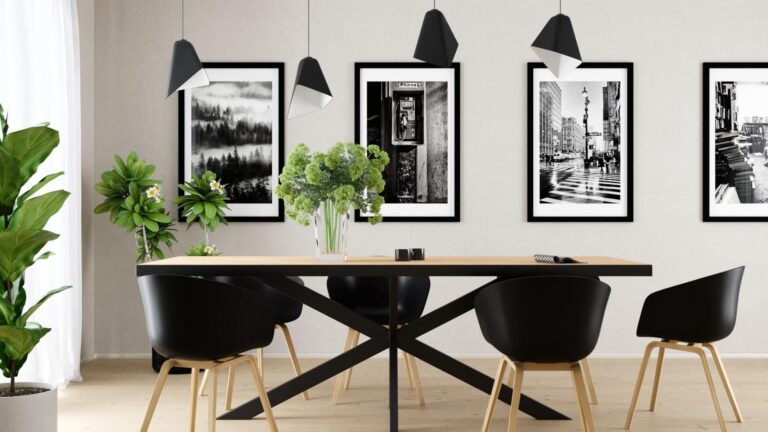
Industrial style interior design is inspired by the raw, unfinished aesthetics of factories and warehouses. This style emphasizes exposed structural elements, open spaces, and a mix of rough textures, creating an urban, modern, and edgy atmosphere. It’s a popular choice for lofts, apartments, and commercial spaces.
1. Key Features of Industrial Style Interior Design
- Exposed structural elements – Such as beams, pipes, ducts, and concrete floors, which highlight the raw nature of the space.
- Open, spacious layouts – Industrial designs often feature large, open spaces with minimal partitions.
- Use of natural materials – Concrete, steel, wood, and glass are common materials in industrial design.
- Neutral color palette – A range of grays, browns, and blacks, with occasional pops of warm tones like orange or red.
- Industrial furniture and décor – Items with metal, wood, and leather finishes, often with a vintage or repurposed look.
- Minimalistic approach – Simple, functional, and unpretentious designs, focusing on the beauty of the materials rather than ornate decoration.
2. Principles of Industrial Interior Design
2.1 Exposed Elements
- Raw materials: Exposing the natural beauty of concrete, brick, and steel to create a bold and rustic feel.
- Structural features: Exposed beams, pipes, and ductwork are left visible as a key element of the design.
2.2 Open Spaces
- Large, airy layouts: Industrial interiors are often expansive, featuring open spaces that create a sense of freedom and flow.
- Minimal divisions: Few walls or partitions are used to maintain the spacious, open environment.
2.3 Mixing Old and New
- Vintage and modern elements: Combining old, reclaimed materials with sleek, modern furniture and lighting creates contrast and adds character.
- Repurposed items: Incorporating industrial or factory pieces, such as old machinery or scaffolding, gives a unique and authentic look.
2.4 Functional Furniture and Lighting
- Simple, sturdy furniture: Industrial style favors practical, no-frills furniture with raw finishes, often made from metal and wood.
- Bold, statement lighting: Use of large, statement light fixtures such as pendant lamps, Edison bulbs, and exposed lighting.
3. Furniture and Décor in Industrial Style
- Furniture with raw finishes: Heavy, industrial furniture made from wood, metal, or concrete.
- Repurposed décor: Items like vintage lockers, factory carts, or reclaimed wood tables.
- Minimalistic furniture: Functional and sturdy pieces, such as metal chairs, steel shelving, and simple sofas.
4. Lighting in Industrial Style
- Edison bulbs: Exposed filament bulbs add a warm, vintage look to the space.
- Industrial pendant lights: Large, steel, or metal pendants are often used to create a bold lighting statement.
- Track lighting: Adjustable spotlights to highlight key areas or features in the room.
5. Advantages of Industrial Interior Design
- Raw, authentic feel – Exposed materials give the space a raw, unfinished look that feels grounded and original.
- Open, airy spaces – The open layout is perfect for creating a sense of freedom and flexibility in the design.
- Mix of vintage and modern – The fusion of old, reclaimed materials with contemporary elements creates a unique and stylish contrast.
- Durability and practicality – Industrial furniture and materials are often highly durable and built to last.
Conclusion
Industrial style interior design embraces the beauty of raw materials, open spaces, and minimalist decor. By focusing on exposed structural elements, mixing vintage and modern furnishings, and using durable materials, this style creates a unique, functional, and edgy atmosphere. It’s a perfect choice for those who appreciate a bold, urban aesthetic with a touch of rustic charm.


No comments yet.